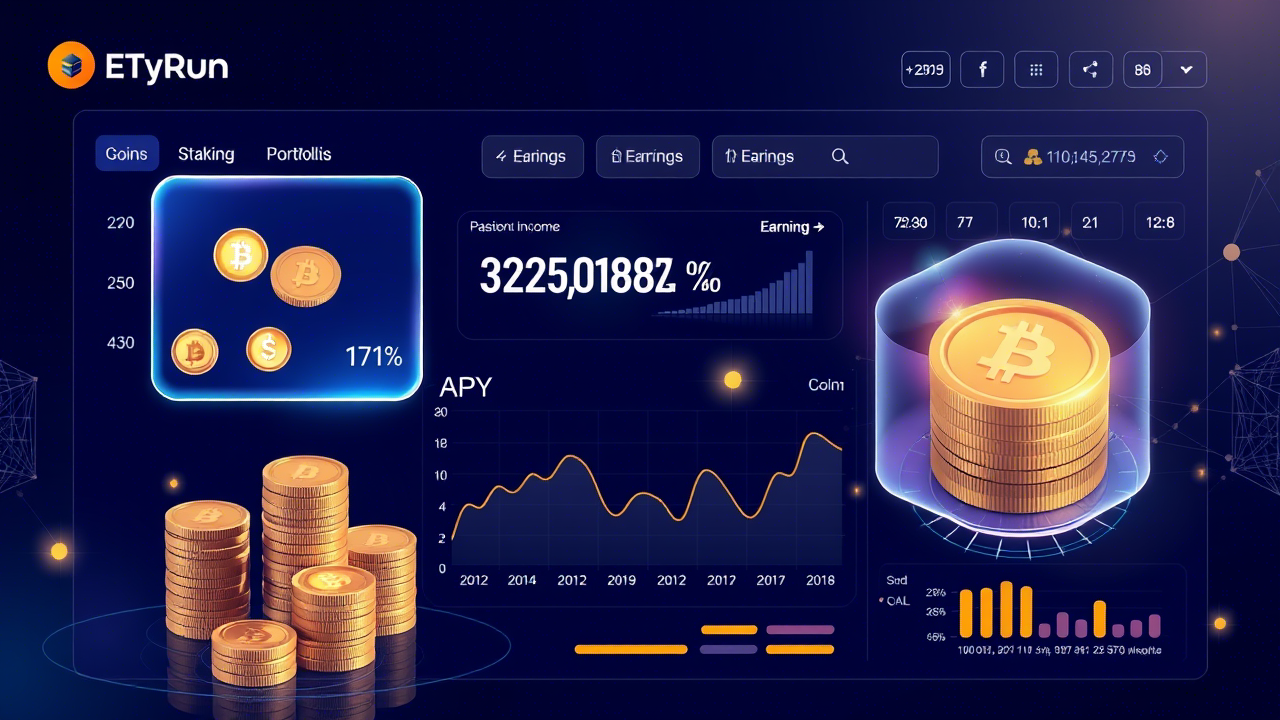The world of digital currency has revolutionized how we think about money, investments, and financial transactions. Cryptocurrency for beginners represents one of the most significant technological breakthroughs of our time, offering unprecedented opportunities for wealth creation and financial independence. Whether you’re a student exploring new investment avenues, a young professional looking to diversify your portfolio, or an entrepreneur seeking alternative payment solutions, understanding digital currency basics is no longer optional—it’s essential.
In my years of financial research and analysis, I’ve witnessed countless individuals transform their financial futures through strategic cryptocurrency investment. This comprehensive guide will demystify the complex world of digital currencies, providing you with the foundational knowledge needed to navigate this exciting landscape confidently and safely.
Understanding Cryptocurrency Fundamentals
Digital currency operates on revolutionary technology that eliminates the need for traditional banking intermediaries. Unlike conventional currencies controlled by governments and central banks, cryptocurrencies function on decentralized networks powered by blockchain technology. This fundamental difference creates unique opportunities and challenges that every beginner must understand.
The concept of digital money isn’t merely about replacing physical cash with electronic alternatives. Cryptocurrencies represent a paradigm shift toward peer-to-peer financial transactions, where individuals can send value directly to one another without requiring approval from banks or financial institutions. This decentralization offers unprecedented financial freedom but also demands greater personal responsibility for security and decision-making.
Understanding the underlying technology helps beginners appreciate why digital currencies have gained such widespread adoption. The mathematical algorithms and cryptographic security measures that protect these networks create trust through transparency rather than relying on institutional guarantees. This technological foundation makes cryptocurrencies resistant to censorship, fraud, and manipulation while providing users with complete control over their financial assets.
How Blockchain Technology Powers Digital Currency
Blockchain technology serves as the backbone of all cryptocurrency operations, functioning as a distributed ledger that records every transaction across multiple computers simultaneously. This innovative system ensures that no single entity can alter transaction records without network consensus, creating an immutable and transparent financial ecosystem.
The blockchain consists of interconnected blocks, each containing batches of verified transactions. When someone initiates a cryptocurrency transaction, network participants called miners or validators verify the transaction’s legitimacy using complex mathematical calculations. Once verified, the transaction becomes permanently recorded in the blockchain, creating an unalterable historical record that anyone can audit.
This decentralized verification process eliminates the need for traditional financial intermediaries while maintaining security and accuracy. The distributed nature of blockchain networks means that even if some computers fail or act maliciously, the network continues operating normally. This resilience makes digital currencies incredibly robust and reliable for storing and transferring value across global boundaries.
Types of Digital Currencies Available Today
The cryptocurrency ecosystem encompasses thousands of different digital assets, each designed for specific purposes and use cases. Bitcoin, the first and most recognized cryptocurrency, acts as digital gold—serving as a store of value and a hedge against inflation and economic instability. Its limited supply of 21 million coins creates scarcity that drives long-term value appreciation.
Ethereum represents the second-largest cryptocurrency by market capitalization and serves as a programmable blockchain platform. Unlike Bitcoin’s focus on peer-to-peer payments, Ethereum enables developers to create smart contracts and decentralized applications. This functionality has spawned entire industries around decentralized finance, non-fungible tokens, and blockchain gaming.
Alternative cryptocurrencies, commonly called altcoins, offer diverse functionalities ranging from privacy-focused transactions to supply chain management solutions. Some altcoins focus on faster transaction speeds, while others prioritize energy efficiency or specific industry applications. Understanding these differences helps beginners identify which digital currencies align with their investment goals and risk tolerance.
Stablecoins are a key type of cryptocurrency, designed to keep their value steady by linking it to traditional assets like the US dollar or gold. These digital currencies provide the benefits of blockchain technology while minimizing price volatility, making them ideal for everyday transactions and serving as safe havens during market turbulence.
Getting Started with Cryptocurrency Investment
Beginning your cryptocurrency investment journey requires careful planning and education rather than impulsive decision-making. Successful investors start by establishing clear financial goals, determining their risk tolerance, and allocating only funds they can afford to lose to this volatile asset class. This conservative approach protects against devastating losses while allowing participation in potential upside opportunities.
Cryptocurrency investment strategies vary significantly based on individual circumstances and market conditions. Dollar-cost averaging represents one of the most effective approaches for beginners, involving regular purchases of fixed amounts regardless of current prices. This approach minimizes the effects of market volatility by gradually building investment positions over time.
Research forms the foundation of successful cryptocurrency investing. Before purchasing any digital asset, investors should understand the project’s purpose, technology, team, and competitive advantages. Reading whitepapers, following development progress, and analyzing market trends provide essential insights that inform intelligent investment decisions.
Diversification across multiple cryptocurrencies and asset classes helps manage risk while capturing growth opportunities from different market segments. Rather than concentrating investments in single projects, spreading capital across established cryptocurrencies, promising altcoins, and traditional investments creates more balanced portfolios that can weather various market conditions.
Choosing the Right Cryptocurrency Exchange
Cryptocurrency exchanges serve as gateways for buying, selling, and trading digital currencies, making exchange selection crucial for investment success. Reputable exchanges prioritize security through measures like two-factor authentication, cold storage for customer funds, and regular security audits. These features protect investor assets from hackers and technical failures that have plagued less secure platforms.
Centralized exchanges offer user-friendly interfaces, high liquidity, and extensive customer support, making them ideal for beginners. These platforms handle the technical complexities of cryptocurrency trading while providing familiar experiences similar to traditional stock brokerages. However, centralized exchanges require users to trust third parties with their funds, creating counterparty risks that experienced investors often seek to minimize.
Decentralized exchanges operate without central authorities, allowing users to trade directly from their personal wallets. These platforms provide enhanced privacy and control but often come with more complex interfaces and reduced liquidity. Beginners often find decentralized exchanges challenging initially but may graduate to these platforms as their expertise grows.
Exchange fees significantly impact investment returns, especially for frequent traders. Comparing fee structures across different platforms helps identify cost-effective options for specific trading strategies. Some exchanges offer reduced fees for high-volume traders or users who hold their native tokens, creating opportunities for additional savings.
Securing Your Cryptocurrency Holdings
Cryptocurrency wallet security represents the most critical aspect of digital currency ownership, as lost or stolen cryptocurrencies are typically unrecoverable. Unlike traditional bank accounts protected by insurance and regulatory oversight, cryptocurrency holders bear complete responsibility for securing their digital assets against theft, loss, and technical failures.
Hardware wallets provide the highest security level by storing private keys offline on specialized devices. These physical devices remain disconnected from the internet except during transactions, making them immune to online attacks. While hardware wallets require initial investments and learning curves, they offer peace of mind for substantial cryptocurrency holdings.
Software wallets installed on computers or mobile devices offer convenience for regular transactions while maintaining reasonable security levels. These applications provide easy access to cryptocurrencies for spending and trading while implementing encryption and security features that protect against common threats. However, software wallets are still at risk from malware attacks and device malfunctions.
Paper wallets represent the ultimate offline storage solution, involving printing private keys and addresses on physical documents. While immune to digital attacks, paper wallets require careful handling and storage to prevent physical damage or loss. Many investors use paper wallets for long-term storage while maintaining smaller amounts in more accessible wallet types.
Understanding Cryptocurrency Market Dynamics
Cryptocurrency markets operate continuously without traditional market hours, creating 24/7 trading opportunities and constant price movements. This perpetual activity results from global participation spanning different time zones and the absence of centralized market closures. Understanding these dynamics helps investors time their transactions more effectively and avoid emotional decision-making during volatile periods.
Market sentiment heavily influences cryptocurrency prices, often leading to sharp fluctuations driven by news, regulations, and social media trends. Positive developments like institutional adoption or regulatory clarity can trigger significant price increases, while negative news about security breaches or regulatory crackdowns can cause sharp declines.
Supply and demand fundamentals ultimately drive long-term cryptocurrency values, despite short-term sentiment-driven volatility. Digital currencies with limited supplies and growing adoption tend to appreciate over time, while those with unlimited issuance or declining usage may struggle to maintain value. Evaluating these core factors enables investors to spot strong long-term investment opportunities.
Technical analysis provides valuable insights into market trends and potential price movements through chart patterns and mathematical indicators. While not infallible, technical analysis helps investors identify optimal entry and exit points while managing risk through stop-loss orders and position sizing strategies.
Common Beginner Mistakes to Avoid
Emotional decision-making represents the most common pitfall for new cryptocurrency investors, leading to buying during market peaks and selling during downturns. Fear of missing out drives impulsive purchases at inflated prices, while panic selling during corrections locks in losses and prevents recovery participation. Successful investors develop disciplined approaches that prioritize long-term strategies over short-term emotions.
Inadequate security practices expose beginners to unnecessary risks of theft and loss. Using weak passwords, storing large amounts on exchanges, or falling for phishing scams can result in permanent asset loss. Implementing robust security measures from the beginning establishes good habits that protect growing cryptocurrency portfolios.
Overinvestment in speculative altcoins without proper research often leads to significant losses when projects fail or lose community support. While some alternative cryptocurrencies generate substantial returns, many more become worthless over time. Focusing on established projects with strong fundamentals provides more reliable investment outcomes for beginners.
Neglecting tax implications of cryptocurrency trading can result in unexpected liabilities and compliance issues. Most jurisdictions treat cryptocurrency gains as taxable income, requiring accurate record-keeping and proper reporting. Understanding local tax requirements helps investors plan transactions strategically and avoid legal complications.
Building Your First Cryptocurrency Portfolio
Portfolio construction for beginners should emphasize established cryptocurrencies with proven track records and strong community support. Bitcoin and Ethereum typically form the foundation of diversified cryptocurrency portfolios due to their market leadership, widespread adoption, and relative stability compared to smaller altcoins.
Allocation percentages depend on individual risk tolerance and investment objectives, but many advisors recommend limiting cryptocurrency exposure to 5-10% of total investment portfolios. Within cryptocurrency allocations, maintaining 60-70% in major cryptocurrencies and 30-40% in carefully selected altcoins provides balance between stability and growth potential.
Regular portfolio rebalancing helps maintain target allocations while capitalizing on market movements. When certain cryptocurrencies outperform others, their portfolio weights increase beyond intended levels. Rebalancing means trimming overperforming assets and adding to underperforming ones, reinforcing the strategy of buying low and selling high.
Performance tracking enables investors to evaluate strategy effectiveness and make informed adjustments over time. Maintaining detailed records of purchases, sales, and portfolio values helps identify successful approaches while highlighting areas for improvement. Many portfolio tracking applications automate these processes while providing valuable analytics and insights.
Cryptocurrency Trading Strategies for Beginners
Cryptocurrency trading strategies range from simple buy-and-hold approaches to complex algorithmic systems, with beginners typically finding success through straightforward methods that minimize risk while learning market dynamics. Long-term holding, often called HODLing in cryptocurrency communities, involves purchasing quality projects and maintaining positions through market cycles.
Dollar-cost averaging provides an excellent starting strategy for beginners, involving regular purchases of fixed amounts regardless of current prices. This approach reduces timing risks while building positions gradually, allowing investors to benefit from market volatility rather than being harmed by it. Many successful investors continue using dollar-cost averaging even as their sophistication increases.
Swing trading attempts to capture medium-term price movements over days or weeks by identifying technical patterns and market trends. This strategy requires more active monitoring and technical analysis skills but can generate higher returns than simple buy-and-hold approaches. Beginners interested in swing trading should start with small positions while developing their analytical capabilities.
Risk management forms the foundation of all successful trading strategies, involving position sizing, stop-loss orders, and diversification across multiple assets. Never risking more than 1-2% of total capital on single trades helps preserve capital during inevitable losing streaks while allowing profitable trades to compound returns over time.
Regulatory Landscape and Legal Considerations
Cryptocurrency regulations vary significantly across different countries and continue evolving as governments develop frameworks for digital assets. Some nations embrace cryptocurrencies through favorable regulations and tax policies, while others impose restrictions or outright bans. Understanding local regulatory environments helps investors make informed decisions about participation levels and compliance requirements.
Tax implications of cryptocurrency activities require careful attention, as most jurisdictions treat digital currency gains as taxable income. Trading, mining, staking, and even receiving cryptocurrencies as payment can create tax liabilities that must be properly reported. Keeping thorough records of all crypto transactions makes tax filing easier and helps ensure compliance with reporting regulations.
Regulatory clarity continues improving in many jurisdictions as governments recognize the legitimate uses and economic benefits of digital currencies. Institutional adoption by major corporations and financial institutions demonstrates growing acceptance and may lead to more favorable regulatory treatment over time.
Compliance with anti-money laundering and know-your-customer requirements becomes increasingly important as cryptocurrency adoption grows. Reputable exchanges implement verification procedures that may seem burdensome but help legitimize the industry and protect users from fraud and criminal activity.
Future Trends and Opportunities
Institutional adoption of cryptocurrencies accelerates as major corporations, banks, and investment funds recognize digital assets’ potential for portfolio diversification and inflation protection. This institutional interest brings additional capital, legitimacy, and stability to cryptocurrency markets while creating new investment products and services for retail investors.
Central bank digital currencies represent government attempts to modernize monetary systems while maintaining control over money supply and monetary policy. These official digital currencies may coexist with decentralized cryptocurrencies while providing bridges between traditional and digital financial systems.
Decentralized finance applications built on blockchain platforms offer alternatives to traditional banking services, including lending, borrowing, and earning interest on cryptocurrency holdings. These protocols provide financial services without requiring traditional banking relationships while often offering more competitive rates and terms.
Non-fungible tokens and digital collectibles create new asset classes and investment opportunities beyond traditional cryptocurrencies. While highly speculative, these markets demonstrate blockchain technology’s versatility and potential for creating unique digital assets with proven ownership and authenticity.
FAQ
Is cryptocurrency safe for beginners to invest in?
Cryptocurrency investment carries significant risks due to price volatility and regulatory uncertainty, but proper education, security practices, and conservative position sizing can help beginners participate safely while learning the market dynamics.
How much money should I invest in cryptocurrency as a beginner?
Financial advisors typically recommend limiting cryptocurrency exposure to 5-10% of total investment portfolios, ensuring that potential losses won’t significantly impact overall financial security or life goals.
Which cryptocurrency is best for beginners to start with?
Bitcoin and Ethereum represent the safest starting points for beginners due to their established track records, widespread adoption, and relative stability compared to smaller alternative cryptocurrencies.
Do I need to understand blockchain technology to invest in cryptocurrency?
While detailed technical knowledge isn’t required, understanding basic blockchain concepts helps investors make informed decisions about different cryptocurrencies and their potential applications and risks.
How can I determine whether a cryptocurrency exchange is reliable and secure?
Reputable exchanges feature strong security measures, regulatory compliance, positive user reviews, insurance coverage for customer funds, and transparent fee structures with clear terms of service.
What happens if I lose my cryptocurrency wallet password?
Lost passwords typically result in permanent loss of cryptocurrency holdings, as most wallets cannot be recovered without proper authentication credentials, emphasizing the importance of secure backup procedures.
Can I make money with cryptocurrency without trading actively?
Long-term holding, staking rewards, and dollar-cost averaging strategies can generate returns without requiring active trading, making them suitable for investors who prefer passive approaches.
Are cryptocurrency gains taxable income?
Most jurisdictions treat cryptocurrency gains as taxable income, requiring proper reporting and record-keeping of all transactions, purchases, sales, and mining activities for compliance purposes.
Final Thoughts
Cryptocurrency represents a transformative technology that offers unprecedented opportunities for financial growth and independence. However, success in this dynamic market requires patience, education, and disciplined investment approaches rather than speculative gambling or emotional decision-making. By understanding fundamental concepts, implementing proper security measures, and maintaining realistic expectations, beginners can participate in the cryptocurrency revolution while protecting their financial well-being.
The journey into digital currency investment should begin with small, manageable positions that allow for learning and experience-building without risking significant capital. As knowledge and confidence grow, investors can gradually increase their involvement while always maintaining appropriate risk management practices.
Remember that cryptocurrency markets will continue evolving with new technologies, regulations, and opportunities emerging regularly. Staying informed through reputable sources, continuing education, and connecting with knowledgeable communities helps investors adapt to changing conditions while building successful long-term strategies.












Leave a Reply